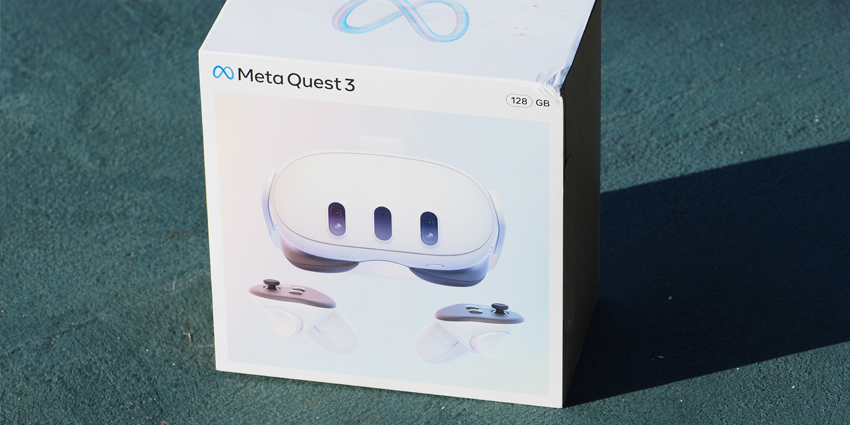There is a lot to celebrate in the XR space. As more and more firms enter the space as software or hardware solution providers, use cases will expand equally. More demand for XR in enterprise use cases means more investment, and hopefully, an increased understanding will prop up the space.
XR solutions can provide a route to reduce capital spending and improve employee experiences – if the correct solution is applied to a business use case.
While not every company needs an expensive Vision Pro or Varjo headset, end users should not forget that XR is far more costly than a headset. XR already exists on your phone and desktop; soon, XR devices may not even leverage conventional headsets.
The best way to stay on top of the ever-changing and emerging marketplace is by taking note of the broad number of XR solution providers.
Apple Debuts Vision Pro 1.1
Following its beta stage, the Vision Pro version 1.1 update is now available to the general public, with notable improvements to device performance, application usage, and the persona system.
For enterprises, Apple is improving enrollment for application access. According to reports, Apple is supporting workers undergoing account-driven enrollment. Workers can now experience enhanced Vision Pro procedures such as installation, managing Apple IDs, networking, and providing support for services like Exchange and Google Workspace.
The latest update for users of Vision Pro provides more control over 3D asset interaction, making it easier to manipulate spatial objects and interact with 3D assets. This is particularly useful for small offices, work-from-home environments, and other on-the-go situations.
Vision Pro also includes a feature called Persona, which creates a digital twin of a user by tracking their facial movements and eyes. However, the feature has faced criticism during its early stages for its uncanny valley qualities.
The Vision Pro is still in its early stages and has yet to be released outside the US. Apple seems to be optimizing the Vision Pro experience before scaling it up.
In addition, Vision Pro has gained a new workplace service this week. Glartek has integrated its Augmented & Connected Worker solution onto the Apple Vision Pro headset, providing frontline workers with innovative training tools and remote collaboration.
The company reports that its frontline solutions are used in various industry sectors such as manufacturing, automotive, utilities, and paper & pulp. Additionally, Glartek mentions that its software can be utilized in other areas, such as retail, training, and remote assistance, to help workers maintain their safety and productivity.
CareAR Celebrates Tata Consultancy Services Partnership
Xerox-owned communication firm CareAR has highlighted its successful collaboration with Tata Consultancy Services (TCS) in integrating its collaboration solutions to enterprise end users worldwide. CareAR recognized TCS with the Global Solutions Integration Partner of the Year 2023 award for delivering exceptional performance, innovation, and leadership in leveraging CareAR’s systems, such as Assist and Instruct.
TCS utilizes CareAR’s XR solution portfolio to provide remote issue resolution, visually guided workflow, and self-solve solutions. CareAR’s immersive communication solutions enhance end-customer experiences and streamline field service operations.
Through the TCS partnership, CareAR has provided an all-in-one digital transformation tool, combining AI and AR technologies to support end-users in various use cases, including client support, contact centre, fieldwork, and training. This demonstrates how CareAR’s firm can help transform enterprise telecommunication systems.
ARway to Capture Growing Markets
This week, ARway continues its journey of providing business-ready immersive wayfinding solutions with the debut of version 3.0 of its platform’s SDK, introducing a trove of features to boost the service as a no-code AR content creation platform.
The AI-powered immersive solution allows end-users to create bespoke assistive reality visuals for various business environments. ARway version 3.0 also enables users to access new features, including peripheral markers, an SDK update, advanced SLAM integration, an updated location pin indicator, low light compatibility, and amenity pin uplift.
Evan Gappelberg, the CEO of ARway, addded:
We are thrilled to introduce ARway V3.0, a significant leap forward in the commercial application of augmented reality. With these enhancements, ARway is poised to capture a larger share of the growing IPN market, directly contributing to increased revenue and profitability. ARway is leveraging the latest in AR technology to create value for our users, partners, and investors. With ARway V3.0, we are setting the stage for the next generation of augmented reality navigation and experiences.
ARWay also announced that various enterprise end-users are adopting its AI-powered software as a service (SaaS) immersive product, including Holition.com, 3D Marx and Aigentless, leverage ARWay’s no-code service for building custom spatial wayfinding visualizations – notably boosting the platform’s adoption in retail and hospitality sectors.






